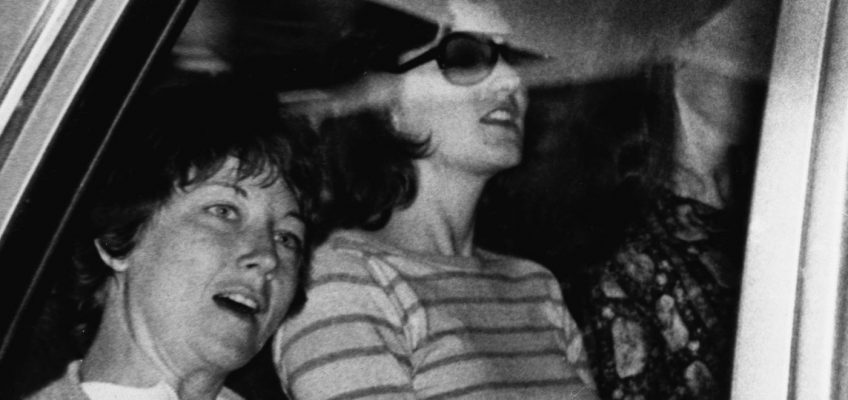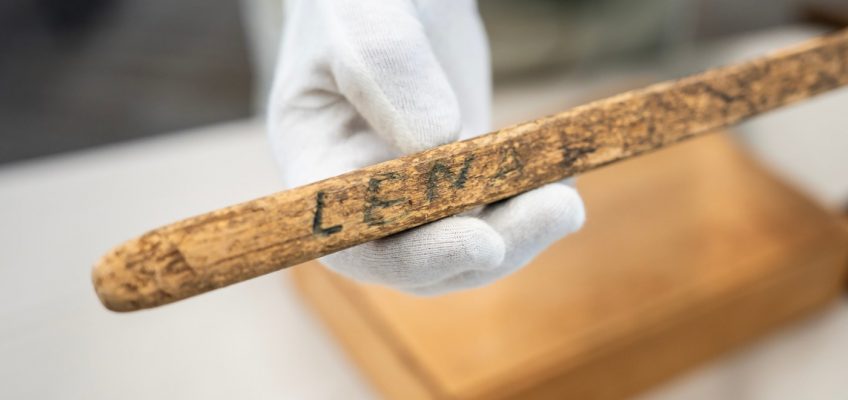It’s that time of year when our garden is producing insane amounts of ripe tomatoes.
A bowl full of tomatoes from the Flemings’ garden. (Courtesy of Ed Fleming)
This past weekend, I went out to harvest and ended up with probably 15 pounds of beautiful heirlooms, which was great, but I had to come up with a plan for them, and fast.
If you’re in the same boat, we have a few tried-and-true recipes that use up a ton of tomatoes and yield something so delicious that it’s worth every second of energy you put into growing, harvesting and cooking them.
This year, I grew five varieties — green zebra, brandywine, black krim, black cherry and San Marzano. I also have a towering tomatillo plant that is producing like crazy.
For two of the four recipes below, you have to prep the tomatoes before cooking. Because we grow so many, we have a tomato press that removes the skins and seeds (a food mill works, too), but you can do it the old-fashioned way.
Here’s how: Use a paring knife to place an “X” at the bottom of your tomato. Drop it into boiling water for a few minutes, or until the skin starts to peel away, then plunge it into an ice bath. The skin should come off easily. If you want to get rid of the seeds, too, cut the tomatoes in half and scoop out the gelatinous pulp and seeds. (Lots of people don’t mind the seeds, so feel free to skip this step.)
Here are four of my favorite recipes that use a lot of tomatoes, for those times when eating a few BLTs a day (definitely something I’m still doing) isn’t putting a dent in your harvest.
And if you don’t grow tomatoes but are interested in making these recipes, this is the time of year that you can often pick up a bushel of tomatoes for pretty cheap at the farmers’ market, because farmers are eager to get rid of them. They might not be the prettiest specimens, but they are perfect for sauces, salsas and soups.
Fresh Tomato Sauce
Tomato puree from San Marzano tomatoes grown in the Fleming garden. (Jess Fleming / Pioneer Press)
I wasn’t sure I’d grow San Marzanos again until I sent them through the press. The resulting pulp was so thick and beautiful that next year, I might plant two! We mixed them with some brandywine and black krim because we had so many we needed to use up, but you would probably have to simmer it for far less time if you stuck to those San Marzanos or romas.
We were overachievers and served this over fresh, homemade ravioli, and it was incredible, but the sauce is great over your favorite dried pasta, too.
Makes enough sauce for 8-10 servings of pasta
INGREDIENTS
6 pounds fresh tomatoes, skinned, seeded and chopped, or run through a food mill
1 large shallot, minced
6 cloves garlic, minced
3 springs fresh basil
1 ½ teaspoon kosher salt
½ teaspoon freshly ground black pepper
3 tablespoons butter or olive oil
DIRECTIONS
Melt the butter or heat the olive oil in a large saucepan over medium-high heat.
Add the shallot and stir for a few minutes, then add the garlic and stir until fragrant, about 30 seconds. Add the tomatoes, salt and pepper. Bring just barely to a boil, then reduce the heat to a simmer and cook until it’s as thick as you prefer it, anywhere from an hour to three hours. When it’s how you like it, add the basil and let it cook for a few minutes to infuse its flavor.
Serve over your favorite pasta and top with more basil and parmesan cheese (optional).
Tip: If you have leftover sauce, freeze it in a zip-top bag for up to six months. Pasta with this fresh sauce in the middle of winter is like a warm, summery hug.
Salsa Verde
Salsa Verde made with a mixture of tomatillos and green zebra heirloom tomatoes from the Fleming garden. (Jess Fleming / Pioneer Press)
This beautiful salsa is like a magic trick if you have green zebras. People taste it expecting the tartness of tomatillo, but they get that incredible heirloom sweetness instead. I did throw in some homegrown tomatillos, too, so I got the best of both worlds. If you don’t like spice, remove the seeds and inner membrane of the jalapenos. If you do, add more or even hotter peppers, like Thai bird or habanero.
Makes about 5 cups of salsa
INGREDIENTS
3 pounds green zebra tomatoes, tomatillos or a mix of the two, sliced in half
10 cloves garlic, peeled
1 large white onion, sliced
3 whole jalapenos, stem removed and sliced in half
½ cup cilantro, chopped
Juice of one lime, or more to taste
3/4 teaspoon of kosher salt, or more to taste
DIRECTIONS
Preheat oven to 400 degrees. Line two baking sheets with parchment paper. Place tomatoes and/or tomatillos, cut-side down, on one of them and the jalapenos, garlic and onion on another.
Roast for 30 minutes.
Heat the broiler and place each sheet under it for a few minutes, until you get some nice char on the vegetables. Watch closely so you don’t completely torch them. Remove vegetables from the oven and let cool slightly.
Add vegetables to the bowl of a food processor, working in batches if necessary. Pulse the vegetables until you get your desired consistency.
Add pulsed vegetables to a large bowl, then add salt, lime juice and cilantro. Taste and add more lime juice or salt if desired. Cool in the refrigerator for at least an hour before serving.
Old-fashioned Tomato Soup
Tomato soup and grilled cheese is the perfect summer meal. (Jess Fleming / Pioneer Press)
This is my husband’s baby — he makes it every year while I crank out grilled cheese for the family to go with it. This year, I coated the outside of the sourdough bread for the sandwiches with butter and finely grated parmesan and stuffed them with extra-sharp cheddar for tang and muenster for meltiness. This soup was the perfect thing to dunk them in!
Adapted from The Joy of Cooking
INGREDIENTS
2 tablespoons olive oil
3 pounds ripe tomatoes, peeled, seeded and chopped (or run through a tomato press)
1 large or 2 small cloves garlic, minced
¾ teaspoon kosher salt, or more to taste
¼ teaspoon freshly ground black pepper
¼ cup heavy cream
Thinly sliced basil, for serving (optional)
DIRECTIONS
Heat the olive oil in a medium-sized saucepan over medium-high heat. Add the onion and saute until translucent. Add the garlic and stir for about 30 seconds, or until fragrant.
Add tomatoes, salt and pepper and simmer for about 25 minutes. Using an immersion blender, puree mixture until smooth. Swirl in cream and taste for seasonings, adding more salt or pepper if desired. Top with basil, if using, and serve immediately.
Panzanella Salad
We have also had an absolute bumper crop of cucumbers this year, and this traditional Italian bread salad is a great way to use up both tomatoes and cucumbers. It’s also an excellent use for stale bread! We served it with some grilled chicken and called it a meal.
Adapted from loveandlemons.com
Makes about 6 servings
INGREDIENTS
For the salad:
½ pound of sourdough bread, cut into 1-inch cubes
1 tablespoon extra-virgin olive oil
1/4 cup thinly sliced red onion
1½ pounds tomatoes, sliced into wedges or cherry tomatoes, halved
1 English cucumber, sliced into half moons
8 ounces fresh mozzarella, cubed (I used pearls)
1 cup fresh basil leaves, torn, plus more for garnish
Kosher salt and freshly ground black pepper
For the dressing:
¼ cup extra-virgin olive oil
3 tablespoons sherry vinegar or red wine vinegar
2 garlic cloves, grated
½ teaspoon Dijon mustard
Heaping ½ teaspoon kosher salt
Freshly ground black pepper
DIRECTIONS
Preheat the oven to 375 degrees and line a baking sheet with parchment paper. Place the bread on the baking sheet, drizzle with the olive oil, and sprinkle with salt. Toss to coat and spread evenly on the sheet. Bake for 15-20 minutes, or until crisp around the edges.
Make the dressing: In a large bowl, whisk together the olive oil, vinegar, garlic, mustard, salt, and several grinds of pepper.
Add the onion, tomatoes, cucumber, and bread to the bowl with the dressing and toss to coat. Add the cheese and basil and gently toss. Season to taste and serve with more fresh basil on top.
Related Articles
Missouri-based Schnucks buys Wisconsin’s Festival Foods, including new Hudson store
Art Deco bar The Commodore to reopen this week on Cathedral Hill
A fiesta of flavor for Hispanic Heritage Month
Marilyn Hagerty, Grand Forks Herald columnist whose Olive Garden review went viral, dies at 99
Longtime St. Paul coffee shop Kopplin’s to close next month




